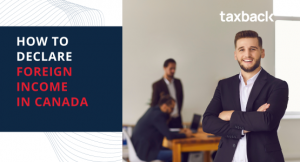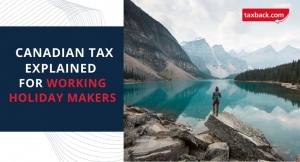The tax-free allowance in Canada has been increased. Here's what you need to know.
The basic personal tax-free allowance has been increasing on a yearly basis for some time now.
This means you can earn up to this amount without paying federal tax on your income.
Finally, something going into your pocket for once!
In this blog, we'll tell you all you need to know about Canadian tax-free allowance.
Let’s start - what is the basic personal tax?
The basic personal amount (BPA) is a non-refundable tax credit that can be claimed by all individuals.
The purpose of the BPA is to provide a full reduction from federal income tax to all individuals with taxable income below the BPA.
Taxpayers who are employed and receive income in Canada are liable to pay both Federal (common tax rates across the country) and Provincial (differing depending on the territory where you work and live) tax on their earnings.
BPA also provides a partial reduction to taxpayers with taxable income above the BPA.
The good news is that residents and non-residents alike are entitled to claim the Basic personal amount (also known as the tax-free allowance) on their income tax return as a nonrefundable tax credit.
Furthermore, the Canadian government has hinted that the tax-free threshold will continue to increase.
Here’s the breakdown:
|
Year |
Proposed increase in BPA |
|
|
2020 |
$13,229 |
|
|
2021 |
$13,808 |
|
|
2022 |
$14,398 |
|
|
2023 |
$15,000 |
|
|
2024 |
|
$15,705 |
The federal tax brackets are progressive in Canada, so the more you earn, the more tax you’ll pay.

How do I know if I am entitled to tax credits in Canada?
When you start a job in Canada, you’ll be asked to fill in the TD1 Form. This is a federal and provincial and personal tax credit form used to determine how much tax you should pay on your income.
Your TD1 is very important and it is vital that it is filled out correctly as The TD1 tax form is used to calculate the correct amount of tax that should be deducted from your employment income.
If you are eligible for tax credits, you can reduce the tax payable over your employment income at source.
However, it’s important to note that not everyone is entitled to claim these tax credits.
If you are a non-resident in Canada you should keep the 90% rule in mind.
The average Canadian tax refund is $998
The 90% Rule
This rule essentially means that if you earned more than 10% (net) of your income outside of Canada, you cannot avail of the personal tax credits. However, if you earned 90% of the income within Canada, then you can claim the credits.
You should factor this rule in when you're filling in your TD1 form. In a case where you didn't earn 90% of your income in Canada for that year then you should enter 0 in box 13 and tick 'No' on the non-resident question on the form.
If you are uncertain about the 90% rule, then it's probably safer to not claim the tax credits. Even if you end up overpaying tax, you'll get a refund this when you file your tax return.
What will I gain from this?
Simple – money!
It is estimated that single individuals will save approximately $200. Meanwhile, couples (without kids) can expect to be $467 better off.
An average Canadian family could save around $585 a year and single-parent families will save $336 in annual taxes.
The new measures are likely to lower taxes for approximately 20 million Canadians. However, those that earn more than $216,511 will not benefit from the tax breaks.
For example:
|
Family type |
Reduction in family’s annual taxes |
|
Single person family |
$189 |
|
Couples with children |
$573 |
|
Couples without children |
$467 |
|
Single parent family |
$336 |
How do I know if I have overpaid tax?
Many individuals pay too much tax without even realizing it. If you overpaid taxes in Canada, you will be entitled to a tax refund.
Some reasons for overpaying taxes are:
- You’ve overpaid tax
- Paid for pension plan
- Overpaid employer insurance
- Had work expenses
Where do I apply?
A quick way to find out whether or not you are due tax back in Canada is by using Taxback's online income tax refund calculator for Canada.
At Taxback the average Canadian tax refund is $998, so it's well worth your time checking out what you're owed!
Taxback, the team of experts understand that you don’t want to spend all your time on your taxes, so leave all the heavy lifting and boring paperwork to us!
The average Canadian tax refund is $998
What Taxback can offer you
There are a variety of reasons why our customers choose to use Taxback, but here's just a few:
- Maximum tax refund guaranteed
- No complicated forms
- Simple online process – They do the work you get the cash!
- 24/7 Live Chat support
- Guarantee to keep you compliant with the Canadian tax authorities
Get started with your refund application today!




